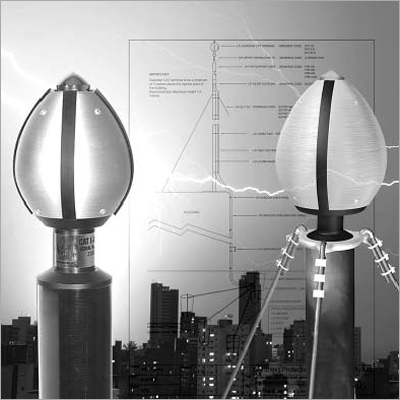


Lightning, is a form of visible discharge of electricity between rain clouds or between a rain cloud and the earth. The electric discharge is seen in the form of a brilliant arc, sometimes several kilometres long, stretching between the discharge points. How thunderclouds become charged is not fully understood, but most thunderclouds are negatively charged at the base and positively charged at the top. However formed, the negative charge at the base of the cloud induces a positive charge on the earth beneath it, which acts as the second plate of a huge capacitor.
When the electrical potential between two clouds or between a cloud and the earth reaches a sufficiently high value (about 10,000 V per cm or about 25,000 V per in), the air becomes ionized along a narrow path and a lightning flash results.
Many meteorologists believe that this is how a negative charge is carried to the ground and the total negative charge of the surface of the Earth is maintained.
The possibility of discharge is high on tall trees and buildings rather than to ground. Buildings are protected from lightning by metallic lightning rods extending to the ground from a point above the highest part of the roof. The conductor has a pointed edge on one side and the other side is connected to a long thick copper strip which runs down the building. The lower end of the strip is properly earthed. When lightning strikes it hits the rod and current flows down through the copper strip. These rods form a low-resistance path for the lightning discharge and prevent it from travelling through the structure itself.
The Powermac lightning arrestor protects the structure from damage by intercepting flashes of lightning and transmitting their current to the ground. Since lightning strikes tends to strike the highest object in the vicinity, the rod is placed at the apex of a tall structure. It is connected to the ground by low-resistance cables. In the case of a building, the soil is used as the ground, and on a ship, water is used. A lightning rod provides a cone of protection, which has a ground radius approximately, equal to its height above the ground.
Office Phone : 90999 39973
Plot No. 228, GIDC Wadhvan Phase 2,
District Surendranagar-363530,
Gujarat, India